Understanding the challenges of its grass-based livestock sector in Ireland
Ireland's grass-based livestock sector, integral to its rural economy and accounting for a significant portion of employment, faces unique challenges due to its significant contribution to greenhouse gas emissions. The sector, primarily consisting of dairy and beef production, not only gives Ireland a competitive edge globally but also places it under scrutiny to meet stringent emission reduction targets. Balancing economic viability with environmental responsibilities, Ireland is pressured to innovate and adapt to maintain its agricultural output while reducing its carbon footprint and improving water quality, amidst changing regulatory landscapes like the nitrates derogation adjustments.
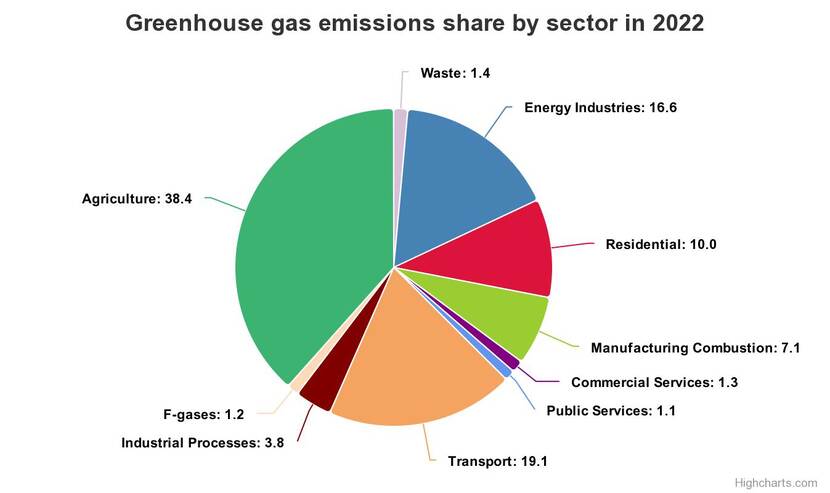
As the largest and oldest indigenous sector, agriculture is the backbone of the rural economy in Ireland accounting for 7.1% of the total employment. Different to mainland Europe, the grass-based livestock production systems in the form of dairy and beef make up the majority of the sector accounting for over 73% of agricultural goods output. With 84% of agricultural land in Ireland devoted to grassland production, it gives it a competitive advantage on the world market but that comes with added challenges. As the largest contributor to greenhouse gasses (GHG’s) accounting for 34% of total emissions in Ireland, there is growing pressure on the agricultural sector in Ireland to achieve its legally binding targets to reduce its agricultural GHG’s by 25% by 2030.
Understanding Irelands GHG emissions position in an EU context
The graph below shows Ireland has higher than average emissions of methane (CH4) and nitrous oxide (N2O) due to it having the highest agriculture emissions contribution towards the total national emissions from any of the EU member states. This is due to the lack of heavy industry in Ireland compared to some other member states. These figures also reflect the relative importance of agriculture to Ireland’s economy. The biggest contributors to Irish agricultural emissions are:
- CH4 emissions from enteric fermentation by ruminant livestock
- CH4 & N2O from manure management – including the production and storage of livestock manures
- N2O emissions from the application of manures and chemical fertilisers to agricultural land
Understanding the breakdown of emissions in the sector is important when trying to identify solutions and opportunities. The graph below is the total net emissions (including LULUCF) based on 2021 data, which is the most recent available.
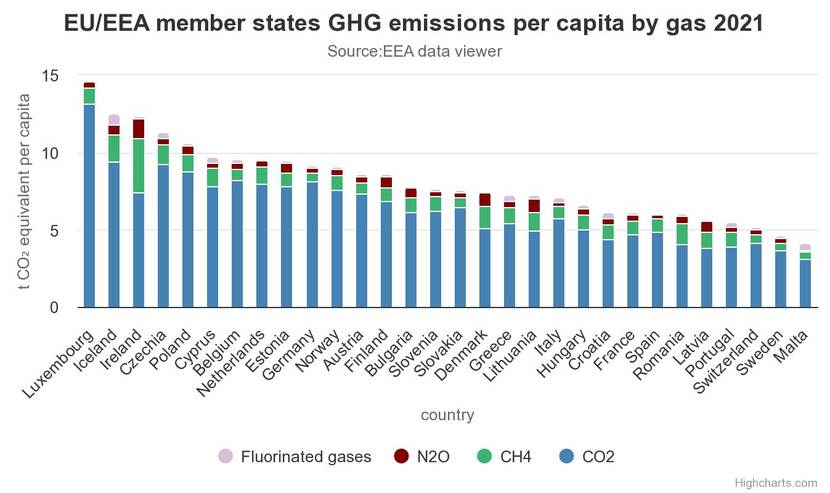
Irelands Nitrates Derogation
While the legally binding target to reduce GHG’s in Irish agriculture remains the priority, it is not the only issue facing the sector. Lack of improvements in water quality in Ireland is an imminent threat to the agricultural sector, particularly the dairy industry. Ireland remains one of three countries who currently avail of a Nitrates Derogation. Approximately 7000 farms currently avail of a nitrates derogation in Ireland but in September, after a mid-term review of Irelands fifth nitrates action programme with the EU commission, the Department of Agriculture Food and the Marine (DAFM) confirmed that the Nitrates Derogation for Ireland will be cut from a maximum of 250 Kg N/Ha to 220 Kg N/Ha from January 1st 2024 due to the increasing trends of nitrates in water bodies.
The decision was met with anger and frustration among farmers. Industry representatives have said that it is unjustified given that studies by Teagasc have shown that stocking rates alone were not found to be a primary driver of increasing N concentrations in water. Slurry storage and mis-management of manure, particularly in bad weather were found to be more damaging along with lack of cover crops on arable land according to the Agricultural Catchments Programme. However, of those availing of a nitrates derogation, it is expected that at least 3000 farmers will be impacted by the new rules. Farmers will either need to take on more land or reduce stocking numbers or export slurry off their holdings in order to meet the new rules. Reducing stocking rates may mean culling cows, while land prices will increase due to increased competition which may impact farmers outside of dairy production. An analysis by IFAC, the specialists in farm accounts and business has shown that some dairy farmers could face a 37% reduction on profits due to the change in limits of the nitrates derogation.
So while Ireland tries to work towards reducing its GHG’s from Agriculture, it also must promptly act on water quality if it wishes to continue to hold on to a Nitrates Derogation.
Agri-Tech Fact Finding Mission
In late October, a public-private delegation travelled to Ireland on a 3 day Agri-Tech Fact Finding Mission. The aim of the mission was to gain a better understanding of the aforementioned challenges and identify opportunities for Dutch technologies and innovations that could contribute to the wider objectives and help the Irish sector in its journey to achieve the set targets. Organised by the Netherlands Agricultural Network Team for Ireland, the delegation compromised of Nederlands Centrum Mestverwaarding, N2 Applied, Hokofarm Group, Duynie Group and Hanskamp Group along with a member of the Ministry of Agriculture Nature and Food Quality and the Netherlands Agricultural Team for Ireland, together they visited:
- University College Dublin Lyons Farm & AgTech UCD
- A Grass-based Dairy Farm with the sustainability team from Tirlan
- Ag Tech Ireland Members Terra NutriTech & Pearsons Milking Technology
- Teagasc Moorepark Animal and Grassland Research Centre
- Farm Zero C
The delegation gained a better understanding of the grass-based nature of the sector in Ireland and how the challenges differ from the Netherlands. They also gained first hand knowledge of the impact of the targets at farm level and the understanding that methane reduction and water quality are key priorities for the sector.
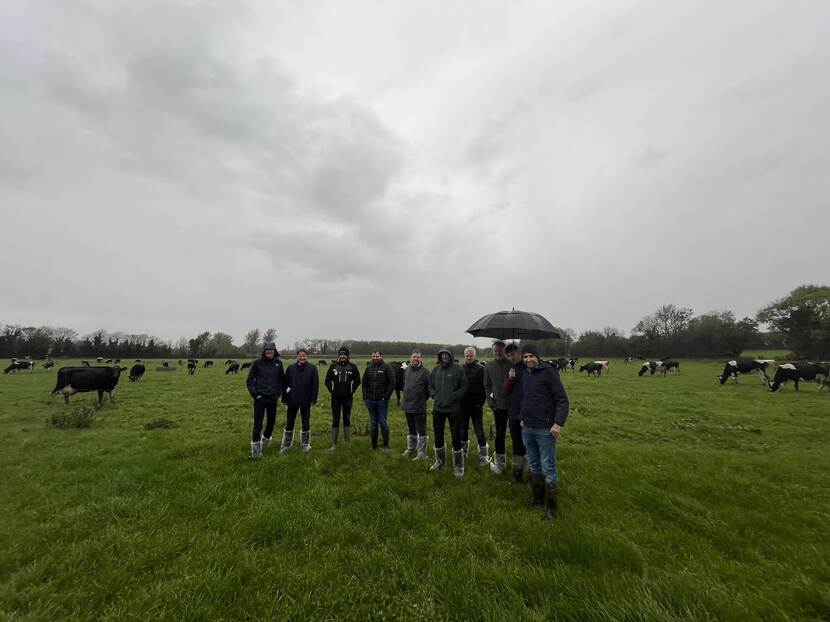
Visits of Interest
The Teagasc Marginal Abatement Cost Curve (MACC)
A visit to Teagasc, the Agriculture and Food Development Authority for Ireland discussed the latest Marginal Abatement Cost Curve with the group. Teagasc is a semi-state organization responsible for research and development in agriculture and the public extension services for agriculture.
Teagasc developed the Marginal Abatement Cost Curve, a tool used to illustrate the potential for reducing and the costs associated with different measures. It helps decision-makers allocate resources for emissions reduction by highlighting the cost-effectiveness of various options. It is also one of the main tools informing policy makers in order to develop a roadmap for the industry. A recent review of the MACC looked at three likely scenarios in the sector where the actions could be applied. Below is a snapshot of scenario 1, the most likely base case scenario predicts growth (8% relative to 2022) in dairy cow numbers and reductions (-29%) in suckler cow numbers over the period to 2030. The 2030 GHG emissions are estimated to be 21.9 MtCO2 eq. This forms the central “Business-as-Usual” scenario and MACC mitigation figures within the report have been calculated using this scenario. The wider the bar, the more effective the mitigation action. Positive values above zero indicate associated costs, while negative values below zero indicate cost-effectiveness. The width of the bar determines the reduction in cumulative KT CO2eq. An example in the paragraph shows that improving the dairy economic breeding index and using protected Urea fertilizer can be cost-effective in reducing emissions with choice of fertiliser having a larger effect.
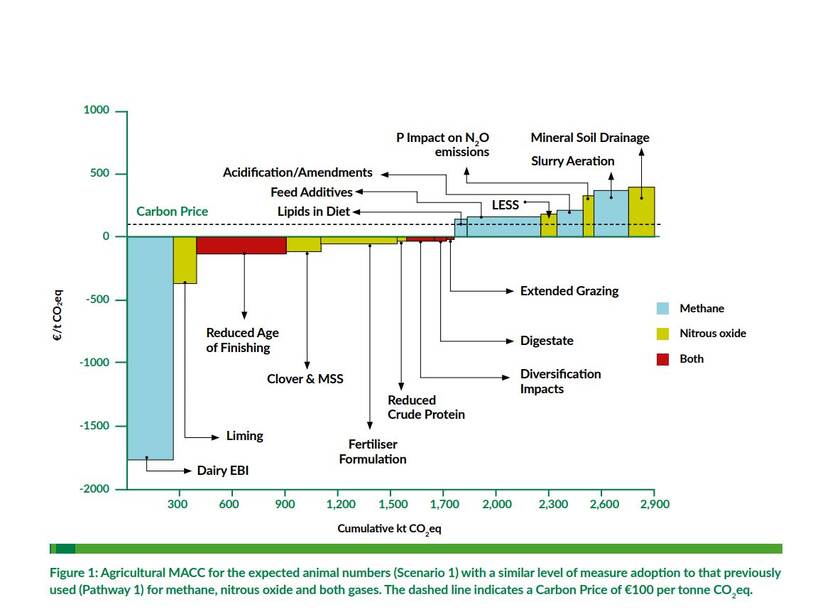
Farm Zero C
The group also travelled to Farm Zero C (FZC) which is a collaboration between dairy processor Carbery, BiOrbic and others including Dutch company Grassa, to create a climate-neutral, economically viable dairy farm taking a holistic approach by combining the reduction of GHG’s, improving water quality and biodiversity whilst still maintaining a profitable business. The project is open to trialing solutions that look at the following areas:
- Soil and caron
- Animal diet and breeding
- Biodiversity and carbon sequestration
- Life-cycle analysis
- Renewable energy
- Clover and multi-species grassland swards
While becoming carbon neutral, FZC has said without offsetting it will be difficult to achieve the zero target. Forestry and carbon sequestration will play a vital role.
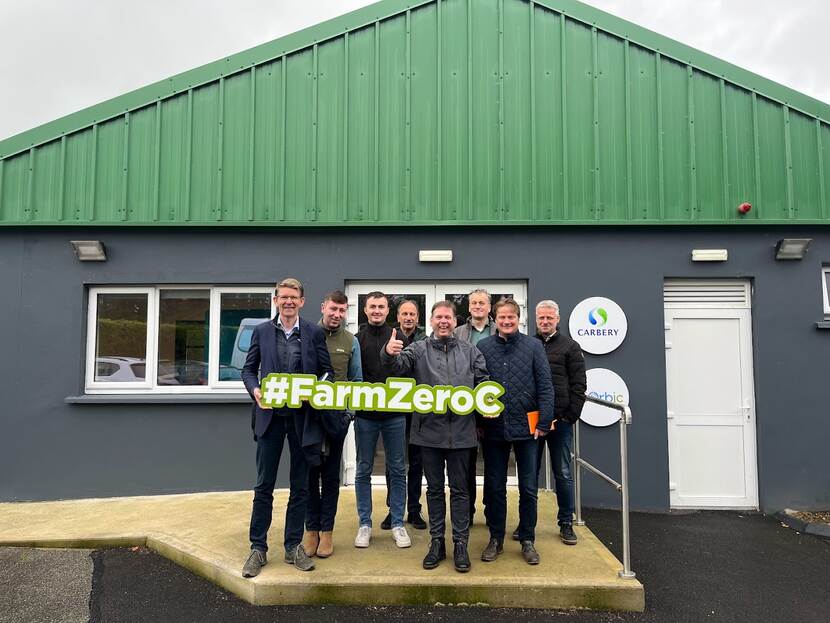
Key Learnings
One key learning from the visit was that the production system of Ireland is vastly different from that of the Netherlands. The outdoor grazing systems of up to 300 days per year combined with less predictable weather patterns make it harder to control variables particularly in relation to emissions and water quality. This means that the need for suitable technologies and innovations is increasing.
The focus on particular issues in Ireland differs from that of the Netherlands. Reducing CH4 from ruminant livestock animals is a key priority for the industry however the ability to do this fast is hampered by the outdoor grazing systems as feed additives are less effective in this situation. While CH4 from manure storage is less of an issue, less predictable weather patterns and longer winters and no improvements in water quality changing nitrates regulations means farmers will now have to store this manure for longer periods. This will require new investments in manure storage and manure additives offering opportunities for Dutch companies.
When it comes to Nitrogen, N2O and Ammonia (NH3) emissions are of concern however the main problems with Nitrogen in Ireland lie with water quality in the form of increased Nitrate levels in waterbodies. Mitigation actions including the management of nutrients spread on the land in order to reduce nitrates entering the stream is a key priority along with increasing biodiversity, tree planting and changing practices in fertilizer use and type.
While Irish agriculture has a different focus and approach to reducing its GHG’s from the sector, it still looks to the Netherlands for solutions and technologies to help achieve the targets. There is ample opportunities for manure technology, digital solutions and increased feed efficiency for Dutch companies in relation to the many challenges faced by Ireland. Research collaborations and network building are high on the agenda of Irish research institutions also making room for further opportunities.
Contact
If you would like to learn more about the opportunities in the Irish agricultural industry, you can contact the Agricultural Department at the Netherlands Embassy in Dublin at dub-lnv@minbuza.nl